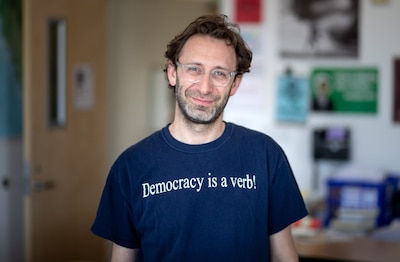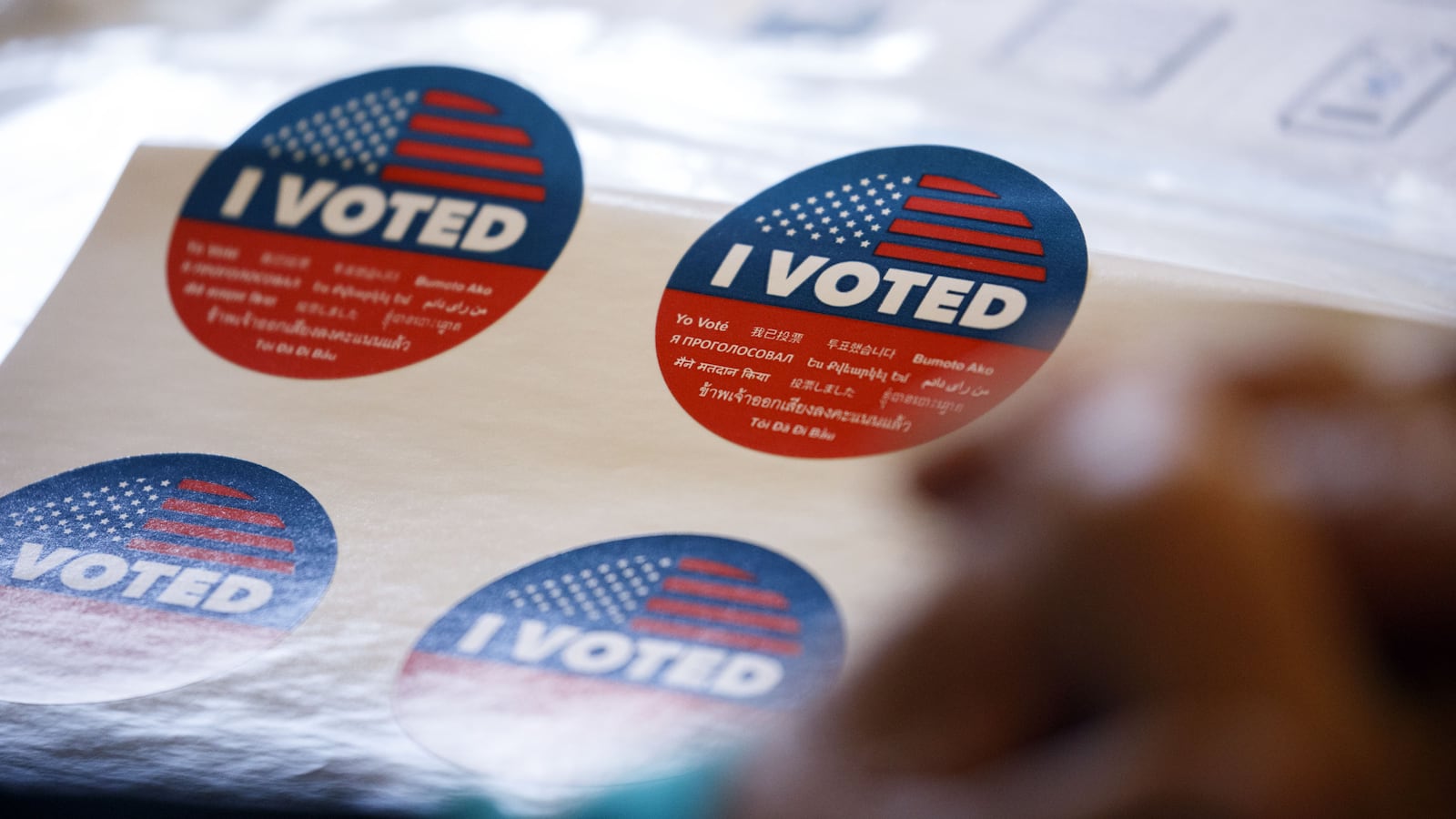I’m embarrassed to admit that in my first decade or so of teaching high school government courses, I thought it was enough to give students a rigorous and challenging education in the systems that make our country run. I thought it was enough to teach them to read, write, speak thoughtfully and to engage in productive discussion.
All of this work was worthwhile, and still is. But I’ve since realized that the high school government or civics classroom is the only formal place in our culture for students to practice democracy. Ever since, I’ve been trying to give my students opportunities to really engage with our government, regardless of their citizenship status.
Over the past four years, my students have met with politicians, federal judges, and prominent journalists; traveled to Sacramento to speak with and propose legislation to their representatives; seen “Hamilton” and “What the Constitution Means to Me” live. But the center of our work has been around voting and elections. Together, we’ve asked each other: How do we register voters, educate voters, and ensure the turnout of voters in a community with historically low voter engagement and empowerment?
That leads to the big question I’ve been grappling with all summer: What does deep, authentic engagement around elections look like in distance learning, and during a pandemic?

In a virtual setting, each of our three primary challenges — to register, educate, and turn out voters in ways that resemble our county’s highest-income areas — will become more difficult. But I think there will be interesting new opportunities, too.
Our work to register voters will be the trickiest. We can’t do what we normally would to pre-register all eligible students, which is walking students through the process with in-person support. But California’s progressive registration process allows my students to register online, something I will expect of every eligible student, with the help of our partners at United Parents and Students.
What will be tougher is helping students make sure others are registered. Registering their eligible parents and older siblings is a start. But how will students safely reach beyond their homes to make a greater impact — especially since most live in mixed-documentation homes? I know students’ understanding of social media and technology will help them reach out to neighbors and friends, but we’re going to have to figure out the details as we go.
Voter education provides us with the most opportunity. Our student-created bilingual Voter Guide, always a centerpiece of our efforts, will have to go digital. The guide will include simple explanations of races and ballot measures, along with well-researched and argued recommendations from students themselves. The reach of this document in the digital format should be broad, and our ability to get it to folks who aren’t accessing traditional and reliable media, or any English-language media at all, makes it a powerful tool. Authentic recommendations from real community members, uninfluenced by corporate cash, brings civic power to our neighborhood of Florence-Firestone.
Our Voter Education Night, often hampered by the logistical challenges of an in-person event, will move online and be able to accommodate more people from a wider range of locations. Finally, we’ll be able to bring in experts to help us understand the ballot measures that will shape our lives — experts who are accessible to us virtually but might not have been otherwise. In partnership with The New York Times Teaching Project, students will be diving deeply into the issues addressed in these ballot measures, using the Times’ thorough reporting to understand the context and what effective reform has looked like in other municipalities and states.
All of this work, of course, falls flat without ensuring that those registered, educated voters get their voices heard by actually casting their ballots.
In recent years, Election Day at my school, Animo Pat Brown Charter High School, has been a celebration, with a third of seniors serving as Student Poll Workers, a polling site in our gym, and a festival-like celebration on our soccer field thanks to United Parents and Students. This year, things will look different. For one, I’m not sure whether we’ll be learning in school by then at all. Two, fewer students are likely to serve as poll workers. I’m concerned about the risks to their families, and I’m sure some of them will be, too.
So we’ll change what it means to play an active role in the election process. Our state has universal vote-by-mail, but particularly given the undermining of the Postal Service, I know that we need to redouble our efforts to make sure ballots are collected and counted. Can we get a ballot drop box near our school? How do we make sure everyone has submitted their ballots with time to spare?
This pandemic isn’t abstract for my students and their families. Last month, I learned that a vibrant 23-year old former student of mine passed away from COVID-19. A countless number of our students have had the virus ravage their multigenerational homes. According to the SELA Collaborative, 51% of households in Southeast Los Angeles, where my school is located, don’t have $1,000 in emergency savings.
Yet the charge of making sure that my students understand and communicate the dire stakes that these (and all elections) have on the realities of their lives is unchanged. The imperative to continue working to turn our neighborhood of Florence-Firestone into a place of high-propensity voters and civic engagement is more pressing than ever. Giving leadership, voice, and power to communities that have been neglected needs to be a big part of our national reckoning.
I continue to believe that government teachers have a duty that extends beyond simple civic education. We need to explore systemic efforts to limit the involvement of our students and their communities, and to encourage civic action. Together, this fall, I hope my students can model what active democratic action looks like, even in a pandemic.
Joel Snyder is a veteran government and economics teacher at Ánimo Pat Brown Charter High School in South Los Angeles. His work is focused around civic engagement and higher education for his students and alums, and is currently a fellow in the New York Times Teaching Project. He is a graduate of the University of Michigan.


